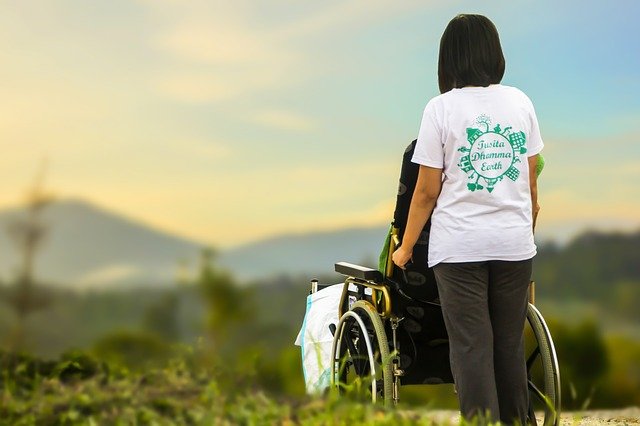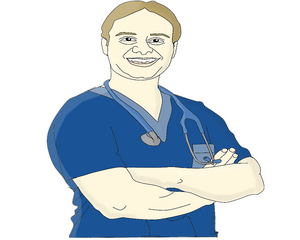
One of the things I have been getting experience in lately is caring for an invalid. As some of you may have to do this at some time, I thought I would share some of the things I have found useful in this process. Others of you have already become seasoned pros in this area and I would love to have you email me and share some of your insights on this subject.
 For the spiritualists out there, pain and suffering do nothing to balance karma. There is no positive advantage to suffering. It does not burn off bad karma, nor does it relieve the bad karma of others. Karma is resolved by learning the lessons presented in times of hardship, not by simply experiencing the hardship.
For the spiritualists out there, pain and suffering do nothing to balance karma. There is no positive advantage to suffering. It does not burn off bad karma, nor does it relieve the bad karma of others. Karma is resolved by learning the lessons presented in times of hardship, not by simply experiencing the hardship.
 Very important; as a caregiver you only have so much energy. If you don’t take care of yourself first, you won’t have any energy for taking care of anyone else. Schedule time for yourself. Schedule time to do nothing. Get out and have some fun or stay at home and relax, but rejuvenate yourself regularly. In that way you will have the energy to willingly want to be of service to the person in need.
Very important; as a caregiver you only have so much energy. If you don’t take care of yourself first, you won’t have any energy for taking care of anyone else. Schedule time for yourself. Schedule time to do nothing. Get out and have some fun or stay at home and relax, but rejuvenate yourself regularly. In that way you will have the energy to willingly want to be of service to the person in need.
 Recovering from a period of being an invalid is hard work. You lose half your muscle tone just by lying in bed for two weeks. It takes months to get this tone back, even if there is no other problem to deal with. One of the biggest problems in recovery is the issue of learned disuse. If you don’t use a body part for several weeks, your brain actually reassigns the brain cells that used to control that part to do other things. The muscles not only get weak, but the brain literally forgets that that body part exists. Much of post stroke paralysis comes from this problem. Constant focused attention and a lot of hard work is required to keep us moving after a spell stuck in a bed. Just imagining moving the body part – even while it is in a cast or otherwise unable to move – will help keep the brain cells on task for moving that part as quickly as possible.
Recovering from a period of being an invalid is hard work. You lose half your muscle tone just by lying in bed for two weeks. It takes months to get this tone back, even if there is no other problem to deal with. One of the biggest problems in recovery is the issue of learned disuse. If you don’t use a body part for several weeks, your brain actually reassigns the brain cells that used to control that part to do other things. The muscles not only get weak, but the brain literally forgets that that body part exists. Much of post stroke paralysis comes from this problem. Constant focused attention and a lot of hard work is required to keep us moving after a spell stuck in a bed. Just imagining moving the body part – even while it is in a cast or otherwise unable to move – will help keep the brain cells on task for moving that part as quickly as possible.
 Good nutrition is vital of course, but a lack of movement quickly sets us up for arthritic joint pain. Movement is a type of nutrition for the joints. Something that is helpful to deal with the joint stiffness and pain is the extract from turmeric – curcumin and the plant extract resveratrol. They knock down the pain and swelling without damaging your liver and kidneys like other painkillers. I use my Anti-inflammatory chocolate every day with Ellen (and myself).
Good nutrition is vital of course, but a lack of movement quickly sets us up for arthritic joint pain. Movement is a type of nutrition for the joints. Something that is helpful to deal with the joint stiffness and pain is the extract from turmeric – curcumin and the plant extract resveratrol. They knock down the pain and swelling without damaging your liver and kidneys like other painkillers. I use my Anti-inflammatory chocolate every day with Ellen (and myself).
First a few words on the mindset necessary to be an effective care giver. A tough one for me to settle into is that I am not responsible for fixing or making my charge ok. I do what I can to support healing and comfort, but I have no control or power over their healing nor can I make them feel ok. They are not ok physically, and that 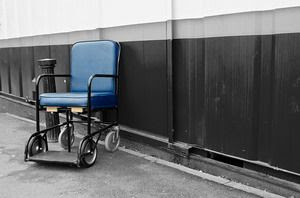 hits most people very hard. It takes time and work for someone who has become physically incapable for a period of time to feel ok emotionally. Who you normally are is suddenly not there. You can’t do the things you used to do. This can be devastating for the person and there is nothing I can do to change the pain and difficulty of the transition other than being supportive.
hits most people very hard. It takes time and work for someone who has become physically incapable for a period of time to feel ok emotionally. Who you normally are is suddenly not there. You can’t do the things you used to do. This can be devastating for the person and there is nothing I can do to change the pain and difficulty of the transition other than being supportive.
 hits most people very hard. It takes time and work for someone who has become physically incapable for a period of time to feel ok emotionally. Who you normally are is suddenly not there. You can’t do the things you used to do. This can be devastating for the person and there is nothing I can do to change the pain and difficulty of the transition other than being supportive.
hits most people very hard. It takes time and work for someone who has become physically incapable for a period of time to feel ok emotionally. Who you normally are is suddenly not there. You can’t do the things you used to do. This can be devastating for the person and there is nothing I can do to change the pain and difficulty of the transition other than being supportive.I believe that individuals do not consciously choose most health crisis situations, and as such it is completely inappropriate for me to blame them for their situation. Yes, they may have set up the situation by their bad life choices, but a health crisis is not the time to make them  try to be culpable. They already feel bad enough without feeling your judgment of them. If you want to keep participating with them, then be supportive. If you are angry and don’t really want to support them, then don’t. Find somebody else to do the job.
try to be culpable. They already feel bad enough without feeling your judgment of them. If you want to keep participating with them, then be supportive. If you are angry and don’t really want to support them, then don’t. Find somebody else to do the job.
 try to be culpable. They already feel bad enough without feeling your judgment of them. If you want to keep participating with them, then be supportive. If you are angry and don’t really want to support them, then don’t. Find somebody else to do the job.
try to be culpable. They already feel bad enough without feeling your judgment of them. If you want to keep participating with them, then be supportive. If you are angry and don’t really want to support them, then don’t. Find somebody else to do the job.I find many people have a hard time letting go of their illusion of control in these situations. They want to use the crisis as leverage to make the patient change their ways – to make them be the way the caregiver wants. “Loved ones” are not the only ones who do this, doctors and nurses do this a lot as well. The understanding that is missing is that everyone is always doing the best they can in every moment – no matter how stupid you think they are being.
 For the spiritualists out there, pain and suffering do nothing to balance karma. There is no positive advantage to suffering. It does not burn off bad karma, nor does it relieve the bad karma of others. Karma is resolved by learning the lessons presented in times of hardship, not by simply experiencing the hardship.
For the spiritualists out there, pain and suffering do nothing to balance karma. There is no positive advantage to suffering. It does not burn off bad karma, nor does it relieve the bad karma of others. Karma is resolved by learning the lessons presented in times of hardship, not by simply experiencing the hardship. Very important; as a caregiver you only have so much energy. If you don’t take care of yourself first, you won’t have any energy for taking care of anyone else. Schedule time for yourself. Schedule time to do nothing. Get out and have some fun or stay at home and relax, but rejuvenate yourself regularly. In that way you will have the energy to willingly want to be of service to the person in need.
Very important; as a caregiver you only have so much energy. If you don’t take care of yourself first, you won’t have any energy for taking care of anyone else. Schedule time for yourself. Schedule time to do nothing. Get out and have some fun or stay at home and relax, but rejuvenate yourself regularly. In that way you will have the energy to willingly want to be of service to the person in need.Now for more practical information. Frequently invalid care involves some level of limited mobility. With Ellen, her entire left side does not work. Helping the patient move from bed to commode is often the most exercise the patient might get all day. Developing specialized lifting techniques so you don’t destroy your own back is vital. For your particular situation get the advice and support of a trained professional to show you how to do this. In my case it was the occupational therapist at the acute rehab center at Mercy General. Although patients 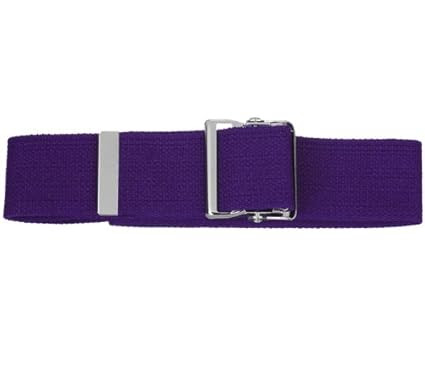 generally hate them, use a gait belt for your safety as much as theirs. Ellen compromised by wearing a stylish leather belt from her wardrobe that was thick and wide enough for me to get a good solid grip on her. This was enough for her case because she still has one good leg to use to help with getting her up and pivoting her into her wheelchair. Fancy ugly gait belts can be found here.
generally hate them, use a gait belt for your safety as much as theirs. Ellen compromised by wearing a stylish leather belt from her wardrobe that was thick and wide enough for me to get a good solid grip on her. This was enough for her case because she still has one good leg to use to help with getting her up and pivoting her into her wheelchair. Fancy ugly gait belts can be found here.
 generally hate them, use a gait belt for your safety as much as theirs. Ellen compromised by wearing a stylish leather belt from her wardrobe that was thick and wide enough for me to get a good solid grip on her. This was enough for her case because she still has one good leg to use to help with getting her up and pivoting her into her wheelchair. Fancy ugly gait belts can be found here.
generally hate them, use a gait belt for your safety as much as theirs. Ellen compromised by wearing a stylish leather belt from her wardrobe that was thick and wide enough for me to get a good solid grip on her. This was enough for her case because she still has one good leg to use to help with getting her up and pivoting her into her wheelchair. Fancy ugly gait belts can be found here.Often when one is bedridden for a period of time and there is limited movement, bed pads and bedpans are necessary. The next step up involves the bedside commode. This is an important step as the use of bedpans inappropriately supports the patient staying in bed. Recovery requires movement. As soon as they possibly can, get them up to pee or have a bowel 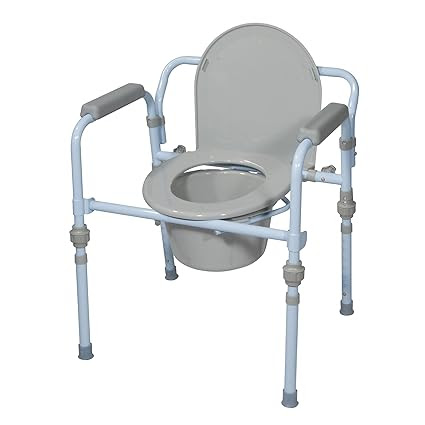 movement. It will often be too much for them to make it all the way to the bathroom, but simply sitting up and transferring a coupe feet to a bedside commode is doable. The world of invalid care is huge. The plus to this is that the tools and support devices are readily available and down right cheap. Here is a well-made commode.
movement. It will often be too much for them to make it all the way to the bathroom, but simply sitting up and transferring a coupe feet to a bedside commode is doable. The world of invalid care is huge. The plus to this is that the tools and support devices are readily available and down right cheap. Here is a well-made commode.
 movement. It will often be too much for them to make it all the way to the bathroom, but simply sitting up and transferring a coupe feet to a bedside commode is doable. The world of invalid care is huge. The plus to this is that the tools and support devices are readily available and down right cheap. Here is a well-made commode.
movement. It will often be too much for them to make it all the way to the bathroom, but simply sitting up and transferring a coupe feet to a bedside commode is doable. The world of invalid care is huge. The plus to this is that the tools and support devices are readily available and down right cheap. Here is a well-made commode.When the patient is able to be moved by wheelchair, they will want to dump the spit baths they have been getting while in bed and opt for a nice “bath.” It would really kill your back to actually get them in and out of a tub, but a 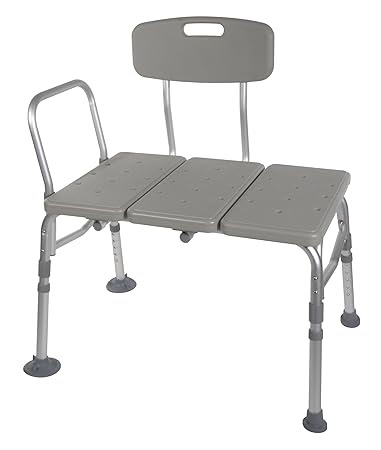 bathtub stool makes it easy to transfer them from a wheelchair to a stool in/over the tub. Once on the stool you can either draw water from the tub faucet into a small container to pour over them or get a shower attachment to fit over the faucet. Check out these. I have found Drive makes good products for little money.
bathtub stool makes it easy to transfer them from a wheelchair to a stool in/over the tub. Once on the stool you can either draw water from the tub faucet into a small container to pour over them or get a shower attachment to fit over the faucet. Check out these. I have found Drive makes good products for little money.
 bathtub stool makes it easy to transfer them from a wheelchair to a stool in/over the tub. Once on the stool you can either draw water from the tub faucet into a small container to pour over them or get a shower attachment to fit over the faucet. Check out these. I have found Drive makes good products for little money.
bathtub stool makes it easy to transfer them from a wheelchair to a stool in/over the tub. Once on the stool you can either draw water from the tub faucet into a small container to pour over them or get a shower attachment to fit over the faucet. Check out these. I have found Drive makes good products for little money.The hospital provided us with a wheelchair as a rental/purchase through Ellen’s Medicare insurance. But if you need a wheelchair, they are also quite inexpensive for what they are.
Another cool tool I found is a pressure changing 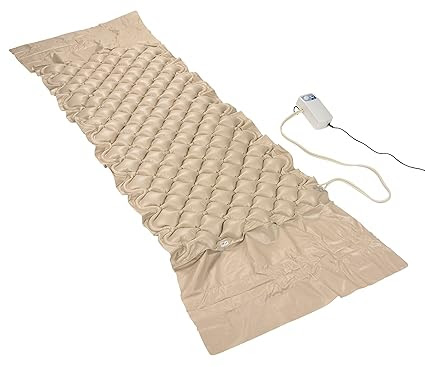 mattress pad to relieve soreness caused by laying in bed so much. Bedsores can be a big problem for patients stuck in bed. This pad has two sets of air channels that alternately inflate and deflate to keep the pressure on the back constantly changing. The pressure unit you hang on the end of the bed is actually fairly quiet in its operation. We are both able to sleep easily with it going on all night long. Get it here.
mattress pad to relieve soreness caused by laying in bed so much. Bedsores can be a big problem for patients stuck in bed. This pad has two sets of air channels that alternately inflate and deflate to keep the pressure on the back constantly changing. The pressure unit you hang on the end of the bed is actually fairly quiet in its operation. We are both able to sleep easily with it going on all night long. Get it here.
 mattress pad to relieve soreness caused by laying in bed so much. Bedsores can be a big problem for patients stuck in bed. This pad has two sets of air channels that alternately inflate and deflate to keep the pressure on the back constantly changing. The pressure unit you hang on the end of the bed is actually fairly quiet in its operation. We are both able to sleep easily with it going on all night long. Get it here.
mattress pad to relieve soreness caused by laying in bed so much. Bedsores can be a big problem for patients stuck in bed. This pad has two sets of air channels that alternately inflate and deflate to keep the pressure on the back constantly changing. The pressure unit you hang on the end of the bed is actually fairly quiet in its operation. We are both able to sleep easily with it going on all night long. Get it here.As Ellen’s mobility increased she needed something to 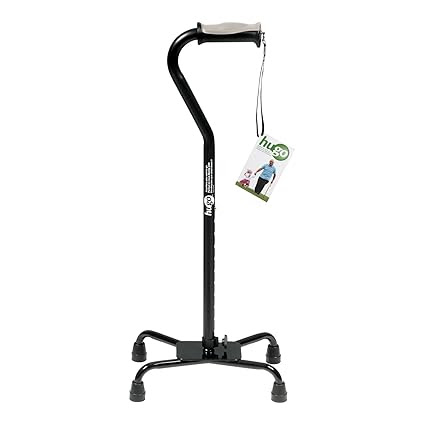 stabilize her while she stood and tried to walk. The Quadcane gave her the stability she needed since she could not use a walker as her left hand was no good. They make a thing called a hemiwalker for stroke victims, but Ellen found the Quadcane worked better. Find it here.
stabilize her while she stood and tried to walk. The Quadcane gave her the stability she needed since she could not use a walker as her left hand was no good. They make a thing called a hemiwalker for stroke victims, but Ellen found the Quadcane worked better. Find it here.
 stabilize her while she stood and tried to walk. The Quadcane gave her the stability she needed since she could not use a walker as her left hand was no good. They make a thing called a hemiwalker for stroke victims, but Ellen found the Quadcane worked better. Find it here.
stabilize her while she stood and tried to walk. The Quadcane gave her the stability she needed since she could not use a walker as her left hand was no good. They make a thing called a hemiwalker for stroke victims, but Ellen found the Quadcane worked better. Find it here.The big challenge when working with an invalid is to be sensitive to their energy level. Their energy can drop tremendously in a matter of seconds. Something they could do a few seconds ago, they might no longer be able to do until after they have rested. This is especially true with patients with any neurologic issues. That said, you also have to be aware that being taken care of is seductively addictive. Humans are hardwired to seek the easy way out. It is silly to do work to achieve a goal to  meet a need if you can get someone else to do it for you. Part of care taking is to be part drill sergeant to make sure that the patient is doing all they can to support their own recovery. That means not doing things for them that they can possibly do for themselves. This was hard for me because it was so much easier and faster for me to do things. It is maddening to watch Ellen spend five minutes trying to do something that only takes me seconds to do. I still have trouble with this one when it comes to dressing her in the morning – putting on shoes especially.
meet a need if you can get someone else to do it for you. Part of care taking is to be part drill sergeant to make sure that the patient is doing all they can to support their own recovery. That means not doing things for them that they can possibly do for themselves. This was hard for me because it was so much easier and faster for me to do things. It is maddening to watch Ellen spend five minutes trying to do something that only takes me seconds to do. I still have trouble with this one when it comes to dressing her in the morning – putting on shoes especially.
 meet a need if you can get someone else to do it for you. Part of care taking is to be part drill sergeant to make sure that the patient is doing all they can to support their own recovery. That means not doing things for them that they can possibly do for themselves. This was hard for me because it was so much easier and faster for me to do things. It is maddening to watch Ellen spend five minutes trying to do something that only takes me seconds to do. I still have trouble with this one when it comes to dressing her in the morning – putting on shoes especially.
meet a need if you can get someone else to do it for you. Part of care taking is to be part drill sergeant to make sure that the patient is doing all they can to support their own recovery. That means not doing things for them that they can possibly do for themselves. This was hard for me because it was so much easier and faster for me to do things. It is maddening to watch Ellen spend five minutes trying to do something that only takes me seconds to do. I still have trouble with this one when it comes to dressing her in the morning – putting on shoes especially. Recovering from a period of being an invalid is hard work. You lose half your muscle tone just by lying in bed for two weeks. It takes months to get this tone back, even if there is no other problem to deal with. One of the biggest problems in recovery is the issue of learned disuse. If you don’t use a body part for several weeks, your brain actually reassigns the brain cells that used to control that part to do other things. The muscles not only get weak, but the brain literally forgets that that body part exists. Much of post stroke paralysis comes from this problem. Constant focused attention and a lot of hard work is required to keep us moving after a spell stuck in a bed. Just imagining moving the body part – even while it is in a cast or otherwise unable to move – will help keep the brain cells on task for moving that part as quickly as possible.
Recovering from a period of being an invalid is hard work. You lose half your muscle tone just by lying in bed for two weeks. It takes months to get this tone back, even if there is no other problem to deal with. One of the biggest problems in recovery is the issue of learned disuse. If you don’t use a body part for several weeks, your brain actually reassigns the brain cells that used to control that part to do other things. The muscles not only get weak, but the brain literally forgets that that body part exists. Much of post stroke paralysis comes from this problem. Constant focused attention and a lot of hard work is required to keep us moving after a spell stuck in a bed. Just imagining moving the body part – even while it is in a cast or otherwise unable to move – will help keep the brain cells on task for moving that part as quickly as possible. Good nutrition is vital of course, but a lack of movement quickly sets us up for arthritic joint pain. Movement is a type of nutrition for the joints. Something that is helpful to deal with the joint stiffness and pain is the extract from turmeric – curcumin and the plant extract resveratrol. They knock down the pain and swelling without damaging your liver and kidneys like other painkillers. I use my Anti-inflammatory chocolate every day with Ellen (and myself).
Good nutrition is vital of course, but a lack of movement quickly sets us up for arthritic joint pain. Movement is a type of nutrition for the joints. Something that is helpful to deal with the joint stiffness and pain is the extract from turmeric – curcumin and the plant extract resveratrol. They knock down the pain and swelling without damaging your liver and kidneys like other painkillers. I use my Anti-inflammatory chocolate every day with Ellen (and myself).That is about it for right now. Hopefully you never need any of this information. But if you do, know that there are a lot of resources and help available to you to get you through rough times like these.
